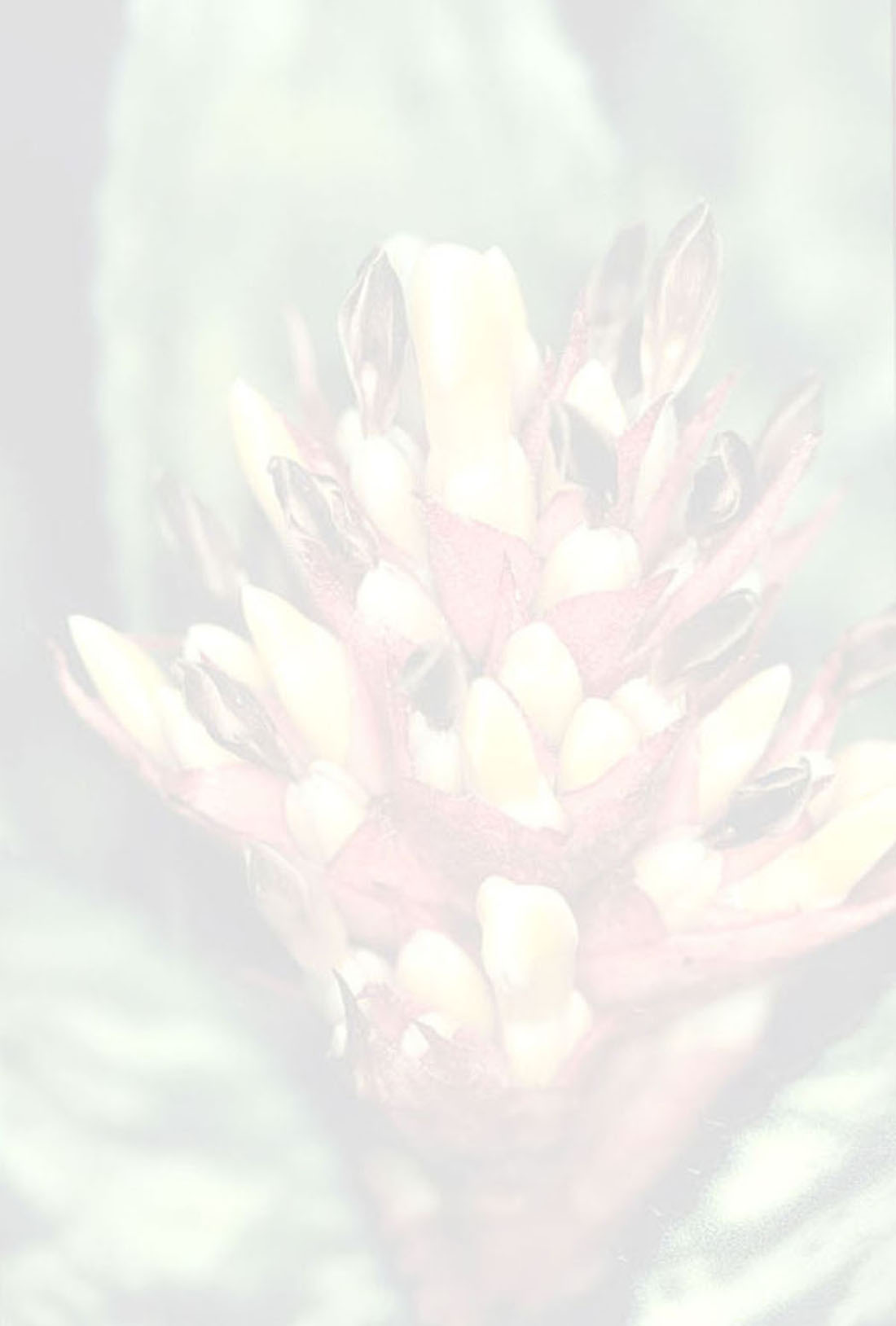

 Aechmea patentissima (Mart. ex Schult. & Schult.f.) Baker[as Aechmea patentissima (Mart. ex Schult. & Schult. f.) Baker]
Aechmea patentissima (Mart. ex Schult. & Schult.f.) Baker[as Aechmea patentissima (Mart. ex Schult. & Schult. f.) Baker]Observations: —DISCUSSION:
Aechmea patentissima was first illustrated under the indigenous name 'marimbu", in Book IV, "Icones Vegetalium", of the collection "Theatrum Rerum Naturalium Brasiliae", organized by Christian Mentzel from 1660 to 1664. This illustration was based on material collected in Pernambuco in the first half of the XVII century by Maurice of Nassau's retinue. The original painting is in the library at Jagiellonian University, Krakow, Poland (Ferrao & Soares, 1993; Teixeira, 1993). Some 200 years later, in 1830, a valid description of the taxon placed it in the genus Billbergia, accompanied by a question mark. In the protologue, the species was attributed to Karl Friedrich Philipp von Martins, with reference to the as yet unpublished "Flora Brasiliensis" and no indication of the origin of the holotype. Later, Baker (1979) transferred Billbergia patentissima to the genus Aechmea and accurately reproduced the description of Schultes & Schultes filius, but he shed no light on the species' origin.
When Carl Mez wrote the monograph of the Bromeliaceae in Martius's "Flora Brasiliensis" in 1891, he created the genus Wittmackia to encompass species of the "Aechmea lingulata complex", including Aechmea patentissima. In the same monograph, he wrote a more detailed description of W. patentissima, but maintained the original conception of the species and provided a print (plate LXI). This plate, by J. Pohl, contains an inflorescence with m suberect-spreading to reflexed branches, with 36 (upper) to 68 (lower) flowers, spreading, densely arranged and apparently subverticillate, plus anthers with the apex distinctly apiculate. Mez also indicated that the species came originally from the region of Almada, in Bahia, in accordance to the holotype. In 1896, Mez described Wittmackia glaziovii as distinguished from W. patentissima mainly by the reflexed branches of the latter in relation to the suberect-ascending branches of the former. The narrower leaves of this taxon also distinguish it from W. glaziovii, but this trait may be an artifact of faulty sampling due to the plasticity of A. patentissima leaves when exposed to different degrees of sunlight. For the past 50 years, A. patentissima has been treated as a variety of A. lingulata (Smith, 1955; Smith & Downs, I979).
Given the narrower concept of Aechmea lingulata (see Chapter 8), the need arose to reestablish A. patentissima as a species, including a group of plants that had been identified as A. lingulata and placing Wittmackia glaziovii in synonymy, thus extending the distribution of the species farther south.
Aechmea patentissima belongs to a group of stouter species within the Aechmea lingulata complex, with inflorescence 30-54 cm long, numerous branches with many flowers, floral bracts 4-6 mm long, slightly shorter to equaling the ovary, flowers 13-14 mm long, subverticillate, in tones of light green to greenish yellow, except for the white petals. The petals of the holotype are cited as being lilac to rose colored in the protologue, but this was not confirmed in association with the suite of morphological characteristics indicated for the taxon, compared to the universe of plants studied. Other characteristics that distinguish A. patentissima are sepals with apical mucro i-i.5 mm long, ellipsoid to obovate ovary and blue fruits.
Aechmea lingulatoides Leme & H. Luther is closest to A. patentissima in terms of morphology. This taxon differs from the former, however, as follows: plants mesic to hygric (vs. xeric); vegetative propagation by short basal shoots (vs. stoloniferous, with stout stolons, 20-40 cm long); sepals with apical mucro 1-1.5 mm long (vs. 2-3 mm long); petals 8-9 mm long (vs. ca. 11 mm long), with apex broadly acute to obtuse -emarginate (vs. acuminate), and ovary ellipsoid to obovate, ca. 4 x 2.5 mm (vs. cylindrical or nearly so, ca. 5 x 2 mm).
Aechmea patentissima is a heliophyte, growing in the Atlantic forest from Paraiba to Rio de Janeiro (unpublished data), mainly at low altitudes near the coast where it is terrestrial in the Restingas and at the edge of mangroves. It is also found as an epiphyte in the canopy of montane forests at ca. 600-700 m altitude. See Chapter 6 for phenology and pollination.Edited from (28-03-2017): Siqueira & Leme 2007. Fragments of the Atlantic Forest of Northeast Brazil - Biodiversity, Conservation and the Bromeliads .